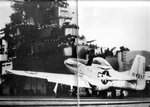Clay_Allison
Staff Sergeant
- 1,154
- Dec 24, 2008
What if the P51-A was available with a P-43 style Turbocharger, (making it an all-altitude fighter) in 1938 to blow away the P-39, P-40, and P-38 in competition.
Probably because of its cheapness and ruggedness, the P-40 would have still been bought as a fighter-bomber, to be superceded in the role later in the war by the bigger, more versatile P-47.
On the other hand, would the P-38 and P-39 have been bought at all? I'd have told Bell and Lockheed to make the P-51 under license. The P-38 would have been a loss, but what would it have delivered to make up for being twice as expensive and far more complicated to build than the P-51. Putting it this way, would a singe P-38 do anything useful against 2 P-51s?
Meanwhile, I'd order Brewster and Grumman to make a folding-wing "Sea Stang" to fit the P-51 for Naval use.
Finally (and the most fun idea for me), I'd commission Hughes aircraft to make an export P-51 (EP-51?) out of Duramold Plywood to send for Allies like the Aussies who were strapped for planes.
The question is, am I going overboard?
Probably because of its cheapness and ruggedness, the P-40 would have still been bought as a fighter-bomber, to be superceded in the role later in the war by the bigger, more versatile P-47.
On the other hand, would the P-38 and P-39 have been bought at all? I'd have told Bell and Lockheed to make the P-51 under license. The P-38 would have been a loss, but what would it have delivered to make up for being twice as expensive and far more complicated to build than the P-51. Putting it this way, would a singe P-38 do anything useful against 2 P-51s?
Meanwhile, I'd order Brewster and Grumman to make a folding-wing "Sea Stang" to fit the P-51 for Naval use.
Finally (and the most fun idea for me), I'd commission Hughes aircraft to make an export P-51 (EP-51?) out of Duramold Plywood to send for Allies like the Aussies who were strapped for planes.
The question is, am I going overboard?

